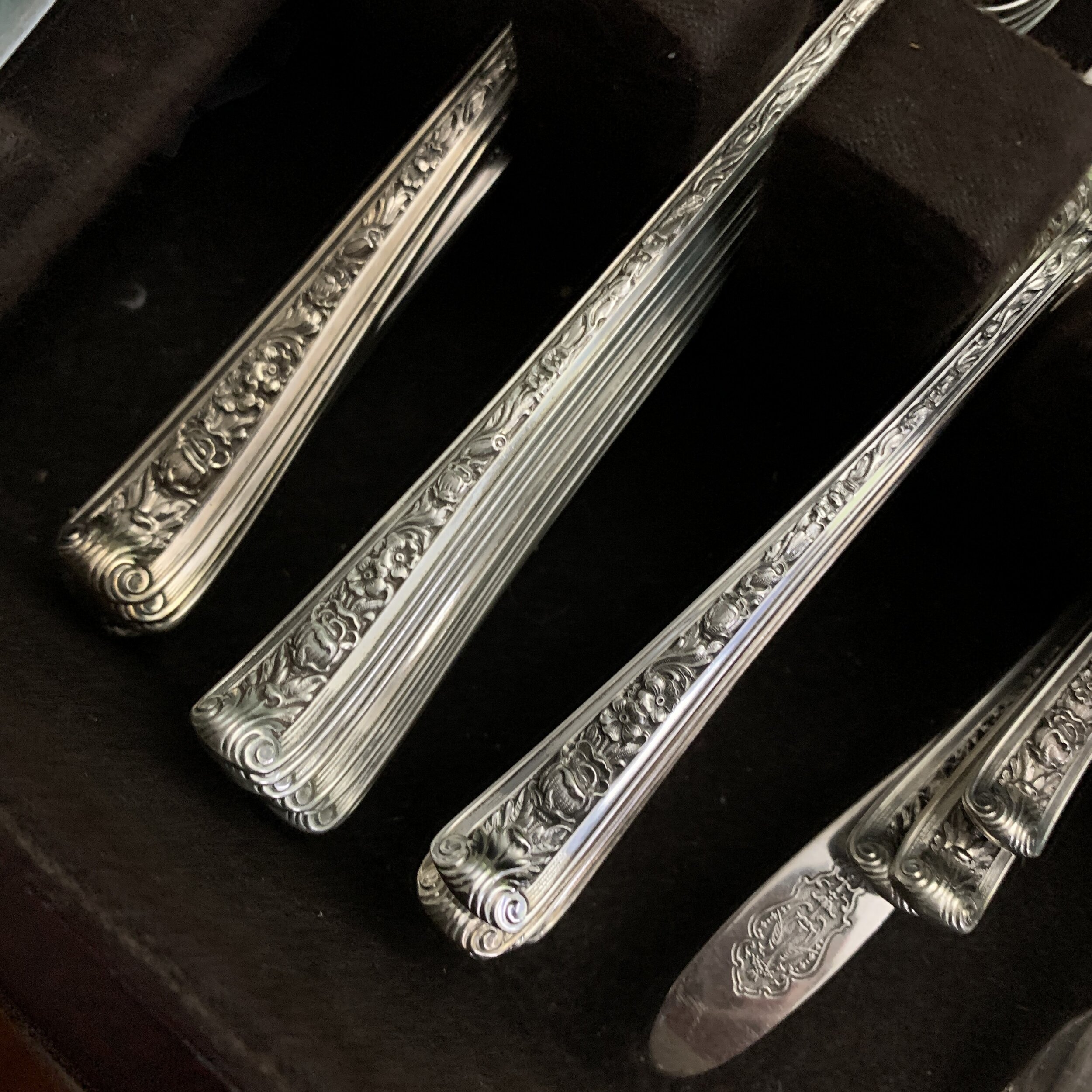Dear Etiquetteer:
If one is serving the salad after the main course, are the positions of the salad fork and place fork switched? Another, somewhat related, question: what type of salad would require a salad knife, other than perhaps a wedge salad?
Dear Puzzled Placesetter:
We are now so used to having the salad first that it feels odd not to have the salad fork on the outside. But Craig Claiborne clears the confusion nicely in his Elements of Etiquette: A Guide to Table Manners in an Imperfect World: “Place forks on the left of the plate in the order of usage. The first one farthest from the plate is the one to be used first.” So it might not feel Perfectly Proper to put the salad fork on the inside if the salad is served in its original place on the menu, after the main course, but it actually is.
As to the necessity of a salad knife, you just don’t know when it’s going to come in handy. For a too-large forkful of greens, a knife can help ease off the excess. Don’t most niçoise salads have full-length green beans in them? And then there’s the Cherry Tomato Bomb. So often when an unsliced cherry tomato is pierced with a fork, it squirts its guts all over your good clothes. For when the cook has neglected to slice, always cut your own tomato to prevent an explosion. So let’s keep the salad knife. As Etiquetteer’s Dear Mother used to say, “Better to have it and not need it than to need it and not have it.”
Dear Etiquetteer:
Only recently I found out that a regular soup spoon is only for clear soup, and that heartier soups with a lot of stuff in them get a different kind of soup spoon with a round bowl. Is this really true, and if it is, what on earth are you supposed to do if you’re served one kind of soup with the other kind of soup spoon?
Dear Soupy:
Whoever gave you that information wasn’t exactly joshing. Back in the day formal dinners would include a choice of soups, clear or thick (often referred to as a cream soup, but not always including cream). Gradually during the 19th century cream soups were no longer offered — and that’s just as well. What a bother, having two different offerings!*
A soup spoon has a large oval bowl, and a cream soup spoon’s bowl is round. There’s even another, larger round soup spoon sometimes called a chowder spoon, but it seems that these are quite rare and we don’t have to bother about them now. And here’s some interesting Spoon Trivia. According to Sterling Silver Flatware for Dining Elegance, cream soup spoons are “a standard item in a six piece place setting in most of the United State, though not in the South, where the iced tea spoon is the fifth member in a place setting.” This would explain why Dear Grandmother’s silver has iced tea spoons and no soup spoons at all . . . but not why she had an armory’s worth of butter knives**.
If some evening you happen to be served a thick soup with a regular soup spoon and not a cream soup spoon, the most Perfectly Proper thing to do is Shut Up and Eat. As Marty Feldman so memorably said in Young Frankenstein, “Say nothing, act casual.”
*Nowadays you just know someone would ask to try both, wreaking havoc with the service . . . this is a dinner party, not an ice cream shop . . .
**Etiquetteer is really at a loss to explain why so many people now refer to “butter spreaders” instead of a Perfectly Proper butter knife. Autre temps, autre moeurs . . .

